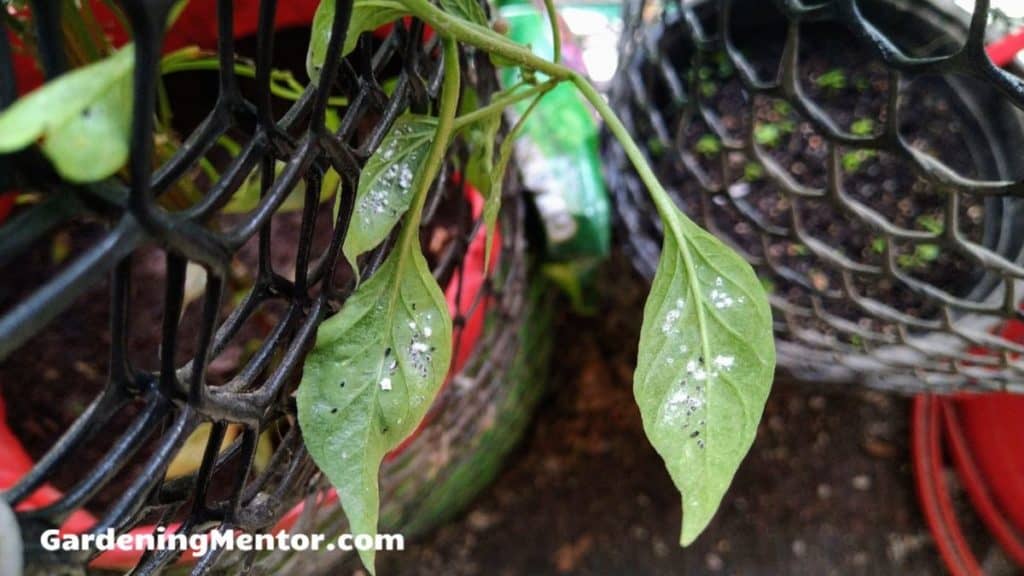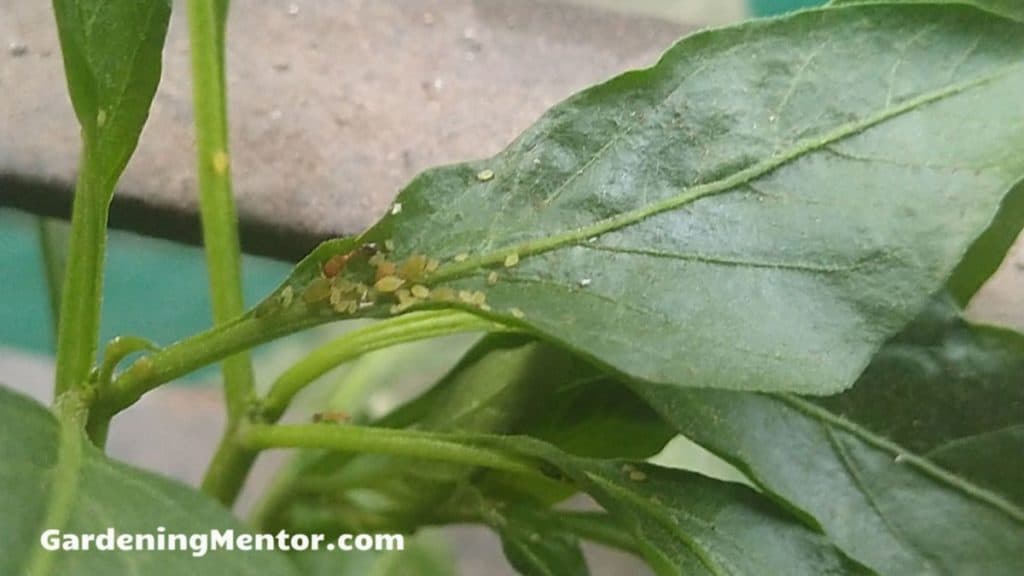It’s wonderful to look at healthy tomato plants in my container garden. But recently I found some of the branches were curling. I wanted to know what is the issue and how I can fix it.
Your tomato branches are curling because they may be under environmental stress. You may have underwatered or overwatered the soil. Sometimes a lack of nutrients can also cause this problem. The branches can also curl due to pests and diseases.
I’ve researched some of these issues and written it in the post below that you may find beneficial if your tomato branches are curling as well.
1. Environmental stress
Tomatoes are one of the most sensitive plants so a little change in the environment can impact them.
If your garden gets a lot of wind, the tomato branches may curl as they try to protect the moisture from drying out.
The same can happen if the weather gets too hot. Tomato branches don’t like this and tend to curl up to protect themselves.
It’s important to prune the tomato branches to keep it in good shape and producing more fruit. But too much pruning will stress the plant causing the branches to curl.
You may start growing tomato plants from seeds or buy the seedlings from a nursery or garden center.
In both cases, the tomato plant will spend some time indoors. So when you want to transplant the plant in the garden, you need to be careful.
If you transplant it without hardening the plant, the stress may cause the tomato branches to curl up.
The good thing about this problem is you can easily fix it. Once the environmental stress on the tomato plant reduces, it bounces back to normal.
2. Underwatering or overwatering
Tomatoes are a warm-season vegetable that needs a lot of water to grow juicy, flavorful tomatoes.
The biggest mistake you can do while growing tomatoes is to overwater or underwater the plant.
If the roots don’t get sufficient moisture, they won’t be able to deliver the nutrients from the soil to the branches and foliage. This makes the branches curl up.
If you begin providing sufficient water to the tomato plant, the branches will get back to their regular shape.
The more serious problem is the issue of overwatering. We become enthusiastic and provide too much water to the plant.
This causes the roots to rot which means they won’t deliver the required nutrients to the branches causing them to curl. If you don’t take care of this issue as soon as possible, the tomato plant will die.
You need to dig the soil and check the tomato plant’s roots. If you find them soggy and smelling, that’s an indication of root rot.
You will need to take the plant out of the soil and cut off the damaged roots. You can then replant it in fresh soil and water it well.
I recommend a technique to check whether your tomato plants need water. This will ensure you don’t end up underwatering or overwatering the plant.
You should check the soil every day near the base of the tomato plant. Stick your finger 1-2 inches in the soil to check the moisture. If the tip of your finger does not feel moist, it’s the right time to water the plant.
3. Too little or too many nutrients
Tomato plants are a hungry resource. You need to give them the right amount of nutrients from seedlings until the plant matures and develops fruit.
A lack of nutrients can cause the tomato branches to droop. This is a common problem when growing tomato plants in a container than the soil.
When growing in soil. the roots can spread deep and wide in search of the required nutrients. They cannot do this in a container so they remain at your mercy to feed them.
I suggest adding organic slow-release fertilizer to the soil when you prepared the soil for the tomato plant. The fertilizer will release into the soil when you water the plant.
The slow-release fertilizer can last you for a few weeks when growing the tomato plant. You can apply such fertilizer 2-3 times during the growing season to keep your tomato plants healthy.
The other alternative is to use organic liquid fertilizer for the tomato plants. You can apply this fertilizer to the soil and the foliage.
The benefit of using liquid fertilizer is that it is quickly absorbed and the nutrients available to the plant. But you do need to apply it every 2 weeks to the tomato plant.
You can also apply it when watering the tomato plant every day. Just make sure to dilute it enough before doing this.
I recommend following the instructions provided by the manufacturer on how much and how often to use the slow-release or liquid fertilizer.
If you use too many nutrients, there’s a chance that it will burn the roots. Since they are unable to provide the nutrients to the plant, the branches will begin to curl.
If that happens, do not add any fertilizer to the tomato plant for several weeks till you see the branches have recovered.
4. Diseases
Fungal
The most common issue you may find on the tomato plant is a fungal disease. Some of them are Fusarium wilt, Septorial wilt, and leaf blight.
These diseases will attack the leaves of the plant but the lack of nutrients will cause the branches to curl as well.
The problem usually happens because a moist environment was created on the plant. If you planted the seedlings when the night temperature was below 50 degrees, this problem can occur.
If there is a lot of foliage on the tomato plant and you’re not pruning the branches, this can create a moist condition.
You also want to avoid splashing water on the foliage. I suggest watering in the morning so the excess water will evaporate once the sun comes up.
You want to avoid watering in the evening but if you have to, make sure to wipe off the excess water from the leaves and branches.
It’s good to use a watering can, soaker hose, or drip irrigation system to water the soil. Avoid using a sprinkler system or a garden hose that sprays water on the entire plant.
If your tomato plant does get a fungal disease, you need to get rid of the infected leaves and branches as soon as possible.
This will help avoid the disease from spreading to the other parts of the plant.
Viral
The other type of disease that can infect your tomato plants is a viral disease like leaf curl virus or the tomato mosaic virus.
Once this problem occurs, the leaves and branches will begin to curl. There is no solution to viral diseases and your plant will keep deteriorating.
You can still grow the plant as it will continue to develop new suckers to try and outgrow the virus. And you can still harvest the fruits without any problems.
But eventually, the tomato plant will be covered with the virus and die. You should make sure not to grow another tomato plant in the same soil for a few years.
5. Insect infestation
There are a lot of insects attracted to tomato plants for their foliage and fruit.
Some insects like aphids and whiteflies grow on the leaves and branches and suck the sap out of them. This causes the branches to curl.
You need to check your tomato plants every day so you can immediately know when such insects have reached your plants. This helps you take care of the problem as soon as possible when it’s small.
Getting rid of aphids and whiteflies is easy with some water. You just need to spray them with water so they dislodge and fall into the soil. Make sure to spray underneath the leaves where these insects usually stay.

The insects cannot crawl back to the plant once they are in the soil. Beneficial insects, birds, and frogs will eat them up.
Fact Checked, Written, and Published by Kevin Rodrigues
Kevin is the founder of Gardening Mentor, a website that aims to teach people to grow their own food in a limited space. As a self-taught gardener, Kevin has spent several years growing plants and creating gardening content on the website. He is certified in Home Horticulture and Organic Gardening from Oregon State University. He has a Post Graduate Diploma in Horticulture and Landscape Gardening from Mumbai University.
Read more


